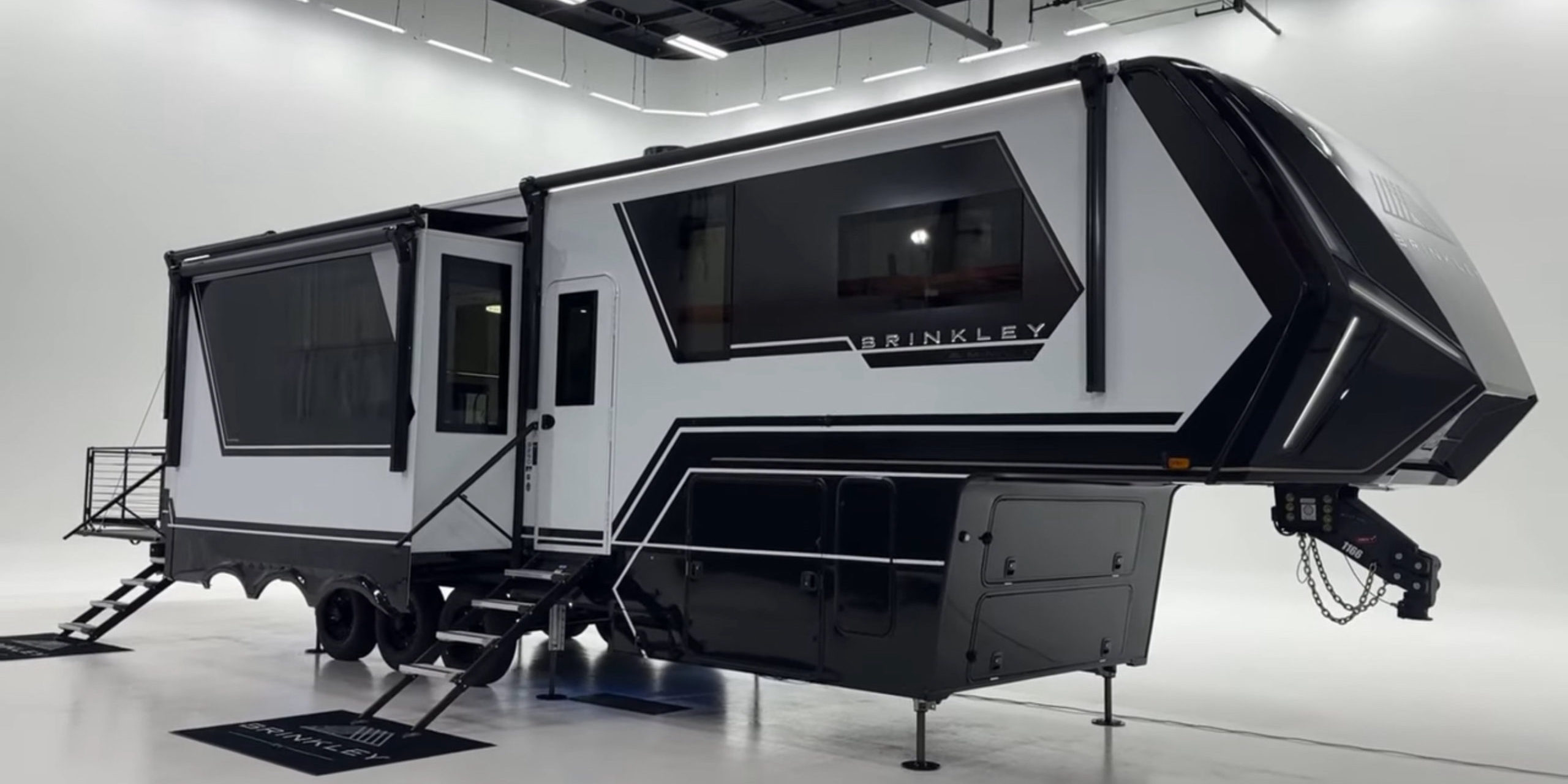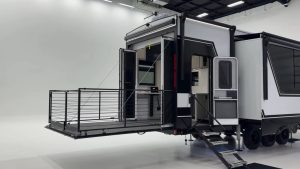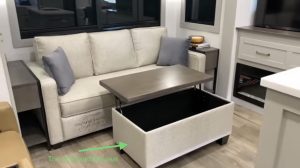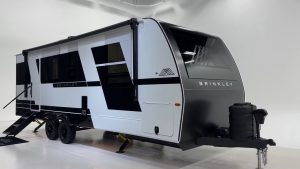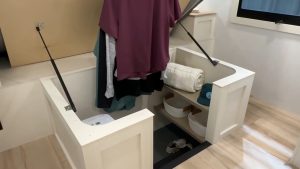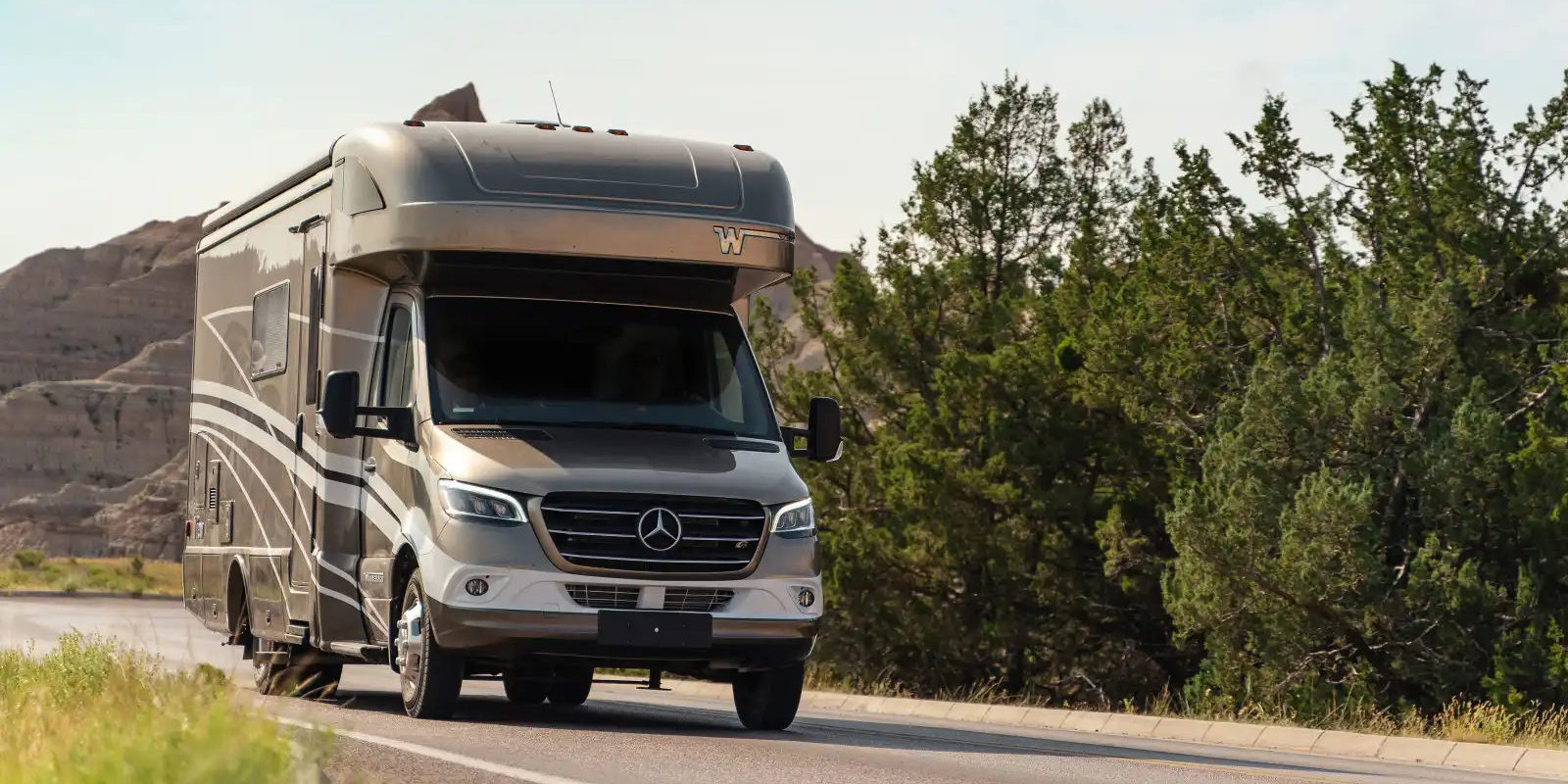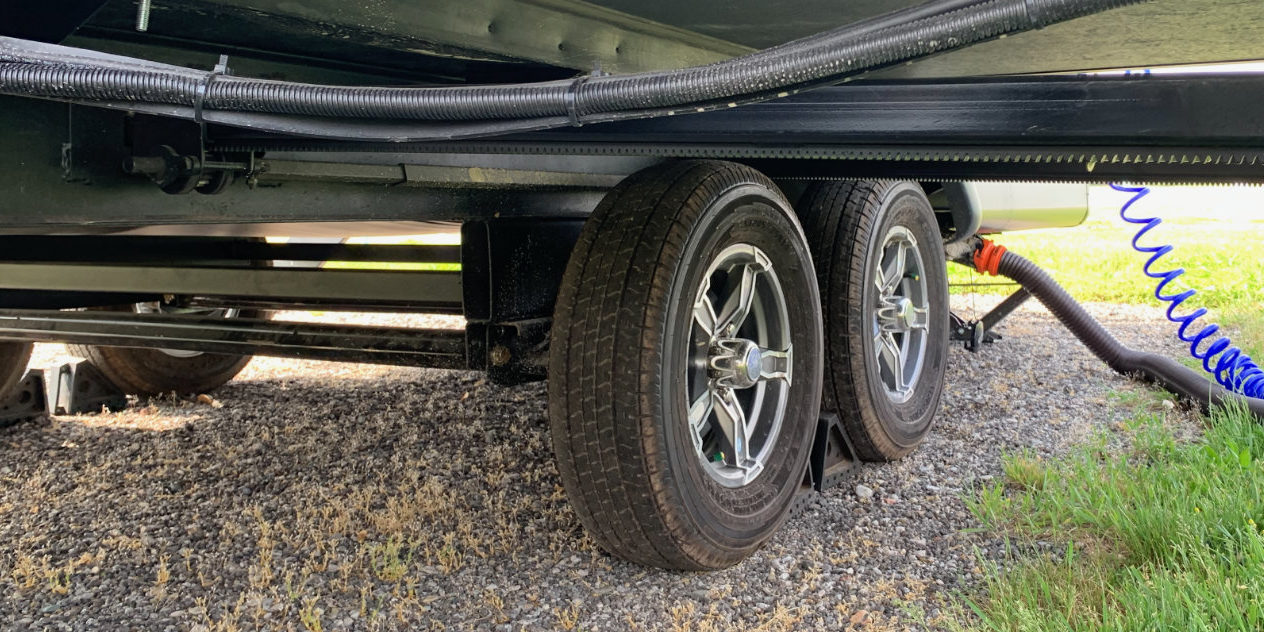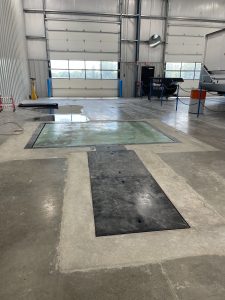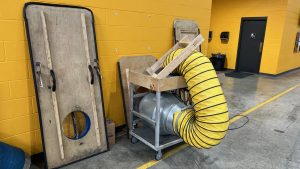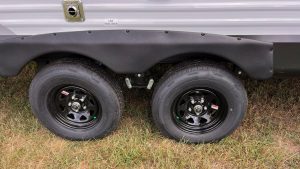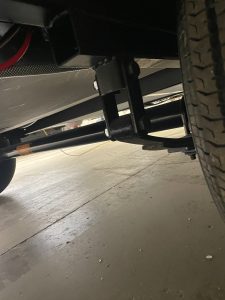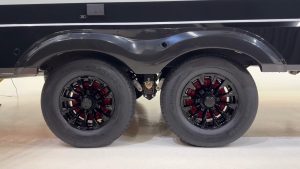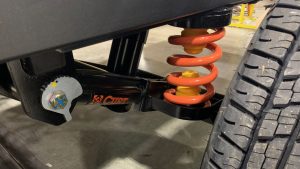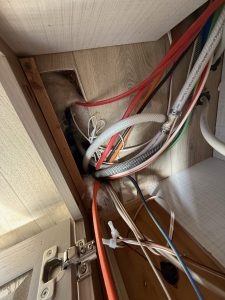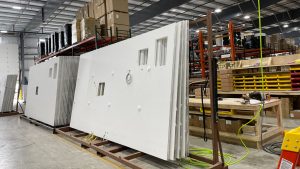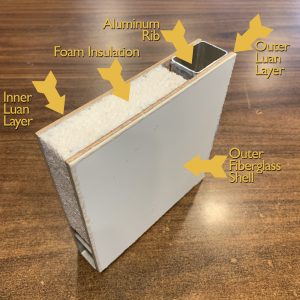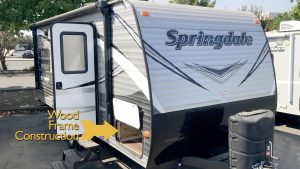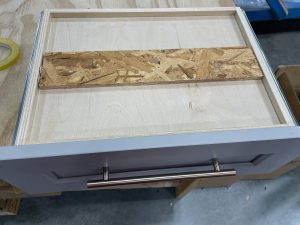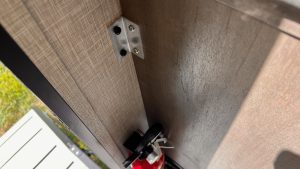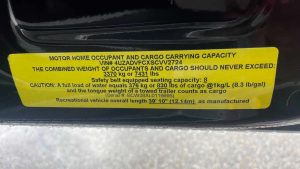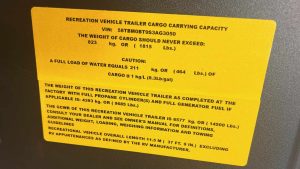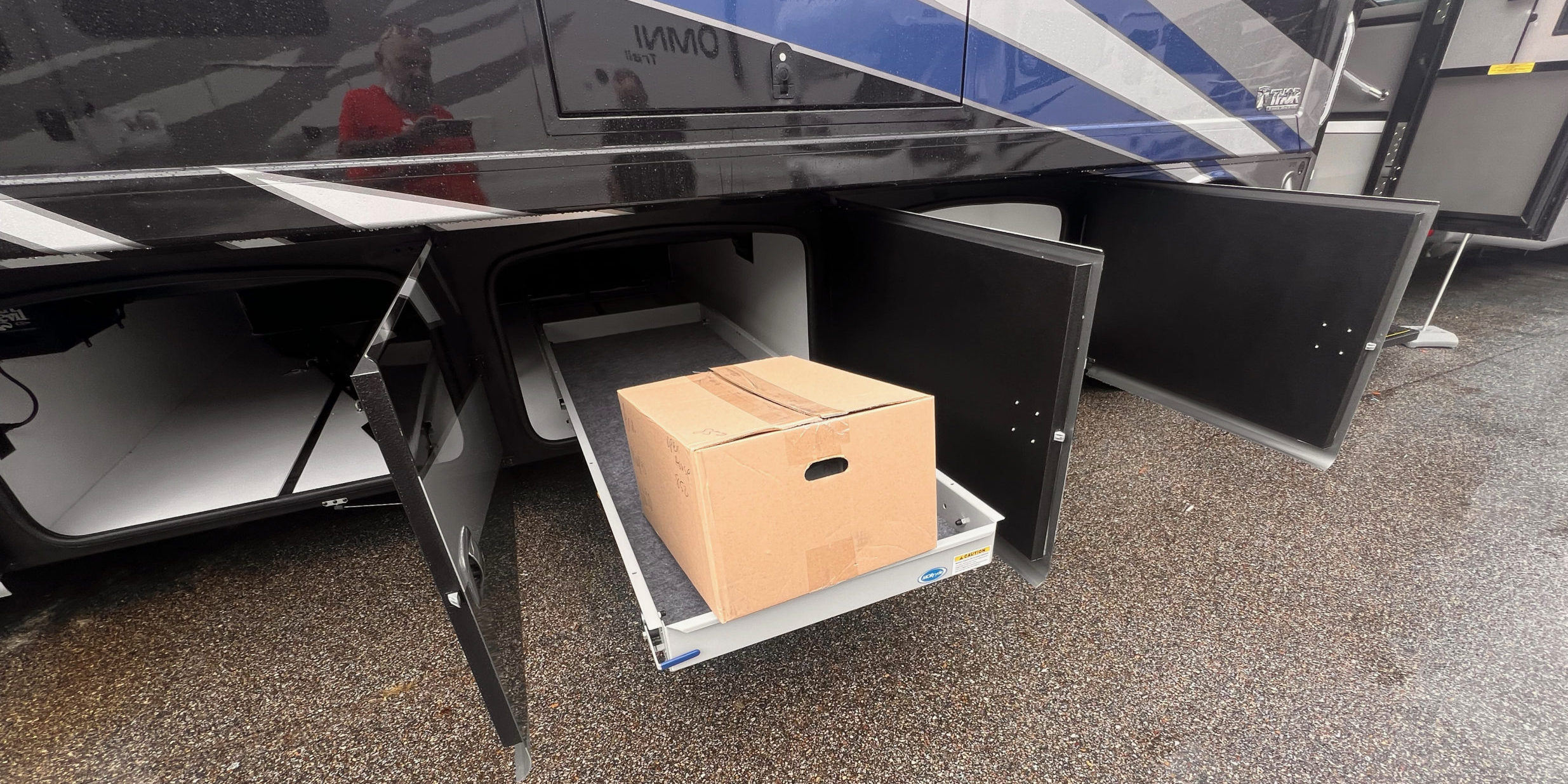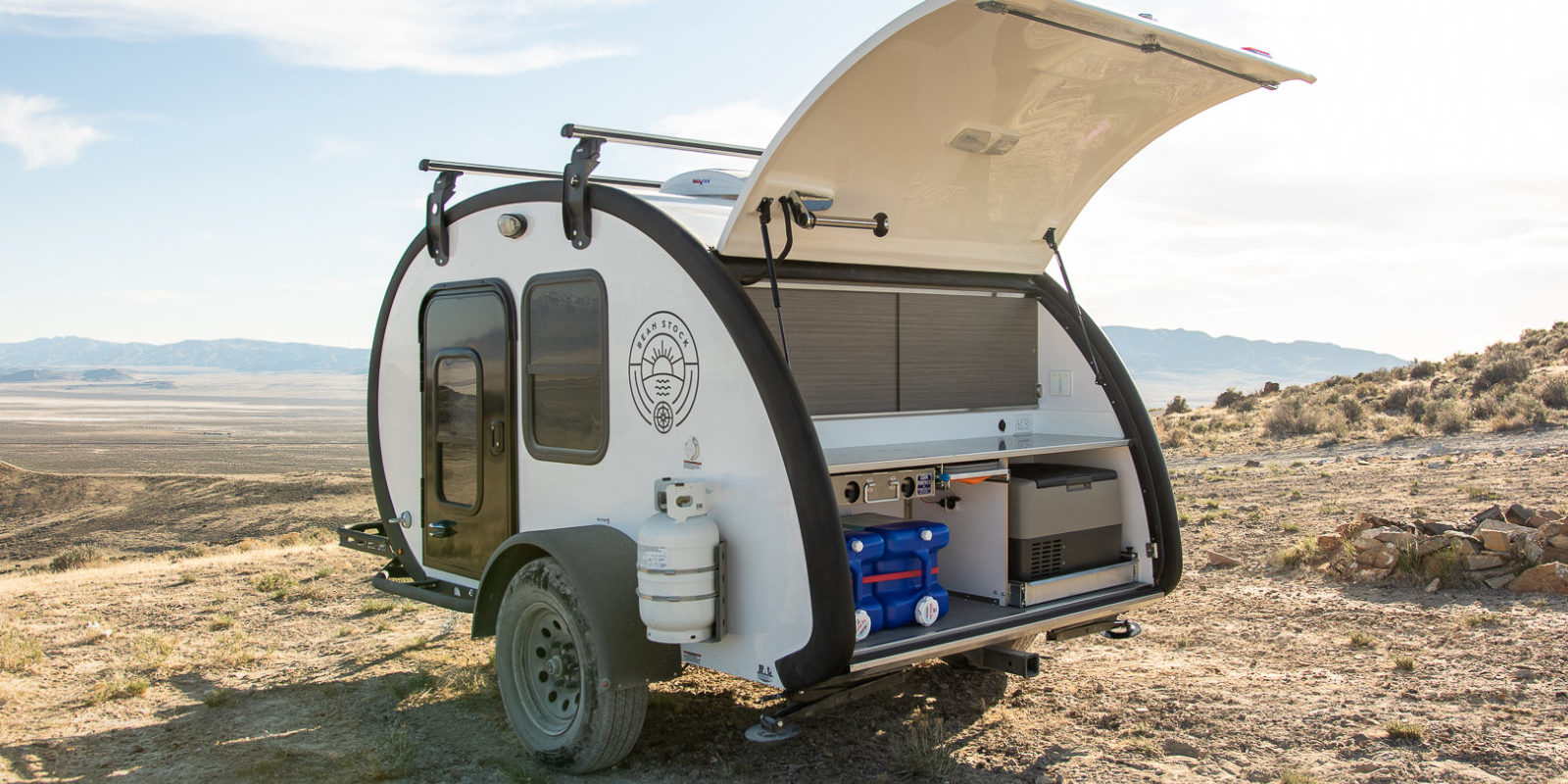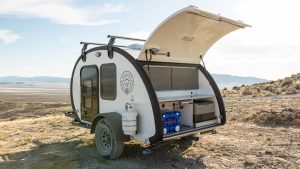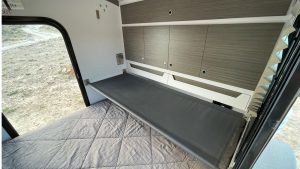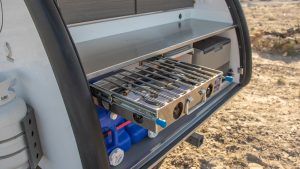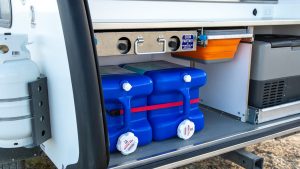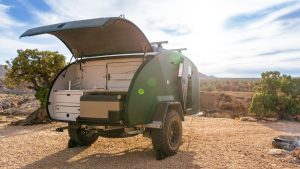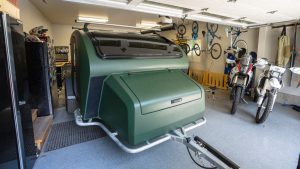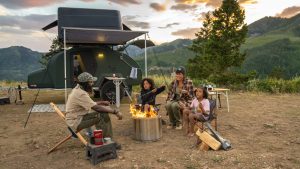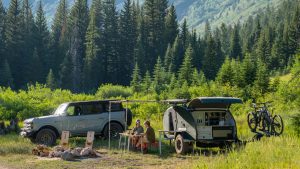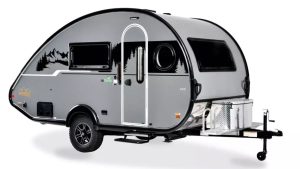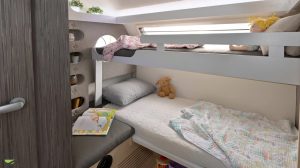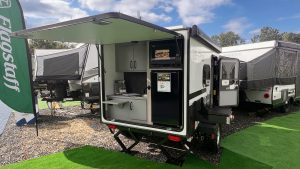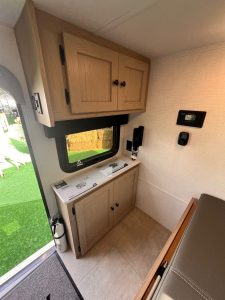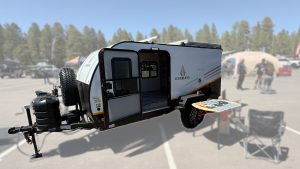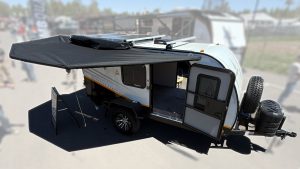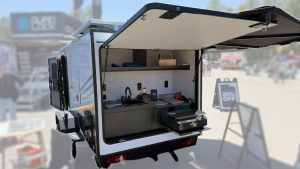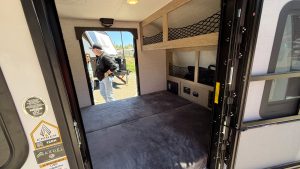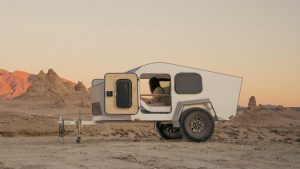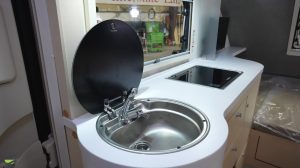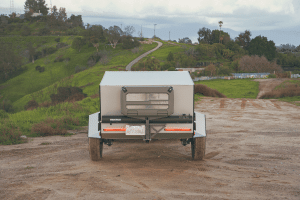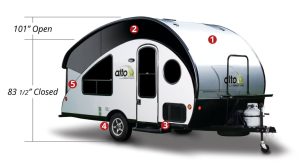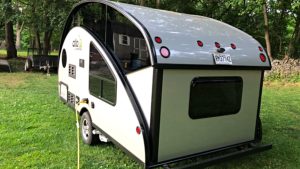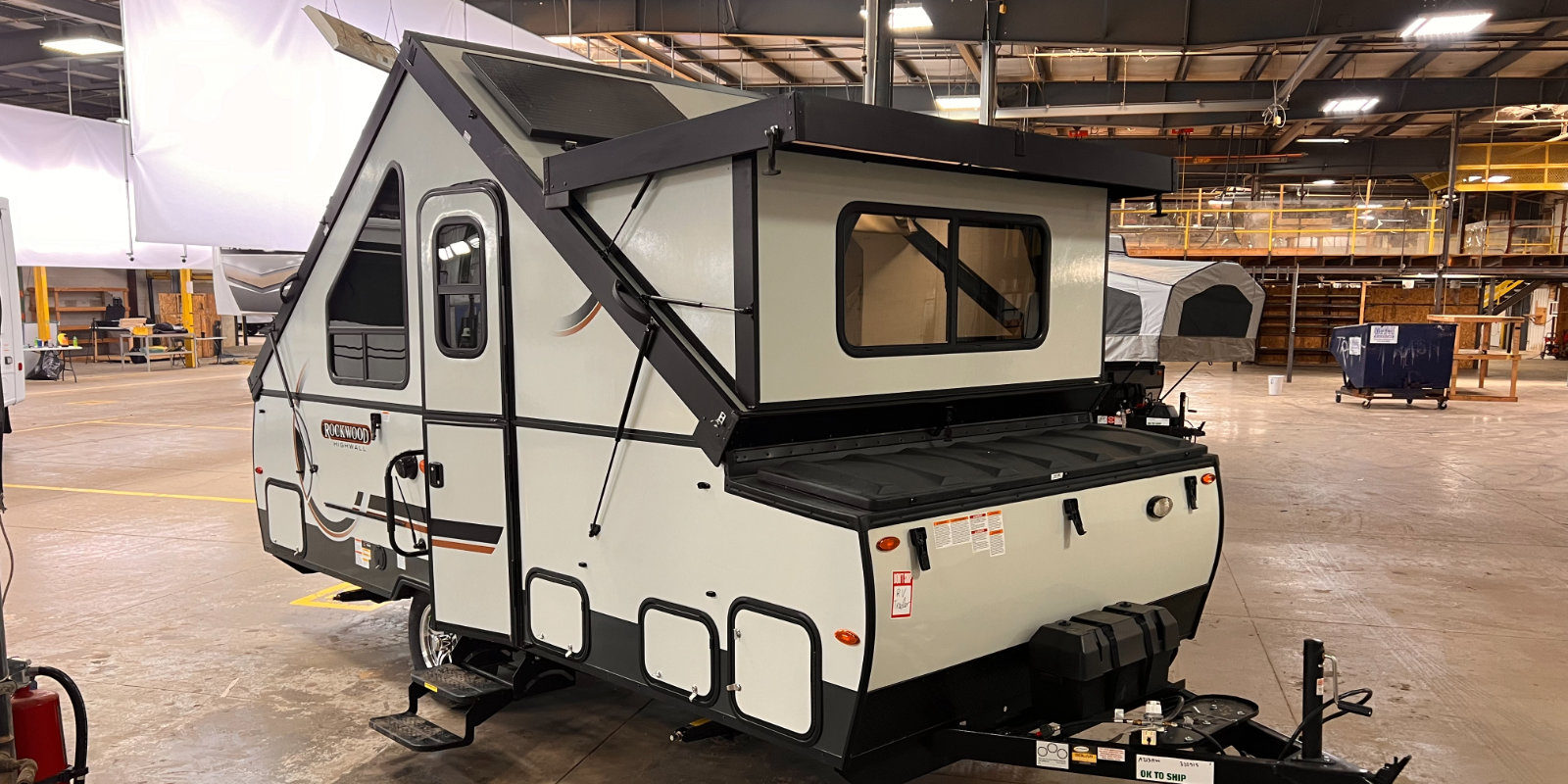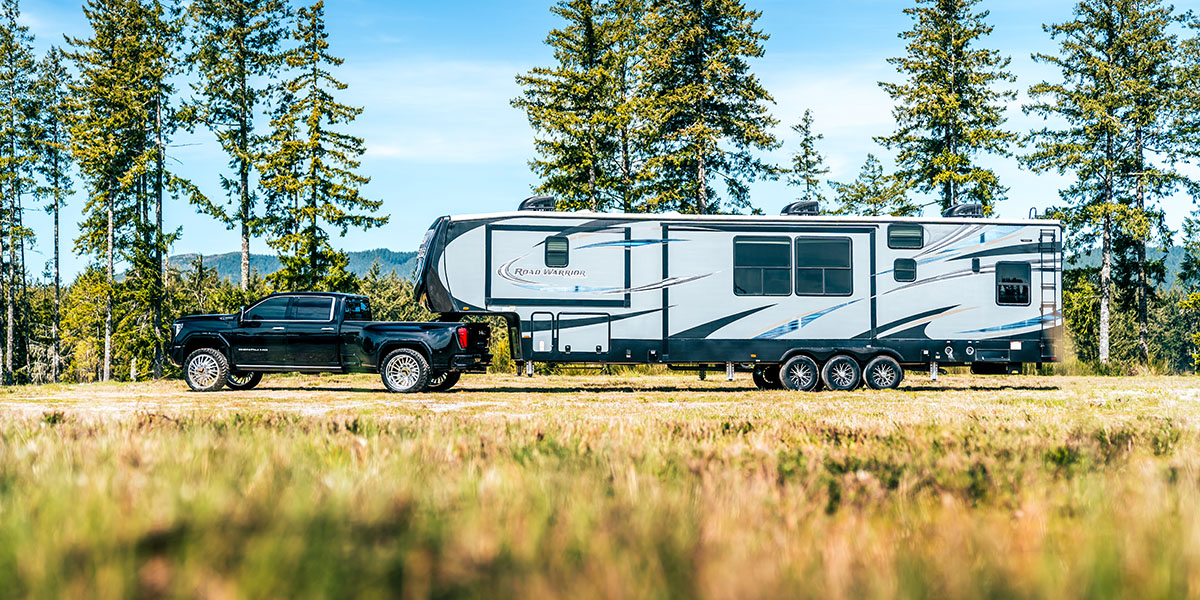It might surprise you (because it’s not common knowledge), but any RV decision makers never go RVing. And in the case of some manufacturers, it shows in the details. So, perhaps it’s a small wonder that Brinkley RV, which debuted in 2022 and is based in Goshen, Indiana, is making a big splash in the RV world. After all, each of its five founders are passionate RVers and industry veterans: Ron Fenech, Micah Staley, Ryan Thwaits, Nate Goldenberg, and Bill Fenech. As Brinkley RV says, “When you live the lifestyle, you become the customer.”
But marketing-speak aside, the company is absolutely shaking up the RV industry. One of the most obvious examples is the styling of the Brinkley line. Their designs incorporate a tasteful, linear style using simple black-and-white graphics. (A strong contrast to the swoops and swirls that had been common in the RV space.) Looking at RVs that have come on line since the introduction of Brinkley RV, more and more brands are adopting this tasteful appearance and ditching the old-fashioned look.
All that is great, of course. But where I’m really impressed is when I look at the actual models in details. So, let’s do that. Here’s a look at four Brinkley RV models that I’ve had the opportunity to see in person.
4 Impressive Brinkley RV Models
Model G 3250 | Fifth-Wheel Toy Hauler
This is one of Brinkley RV’s entries into the field of toy haulers. Frankly, it was one of the first times I had seen just what this company was capable of. One of the things that really sells RVs are the cabinets, and Brinkley’s feature things like dropdown knife and silverware storage. The cabinets themselves are built with dovetail edges. (If you didn’t know, that’s the highest quality way to build cabinets.)
Also, if you hate dumping tanks because of the tank valve contortion, your problem is solved. The G 3500 incorporates electric gate valves. So, you just connect up one hose and push a button. There are a lot of fifth wheels — not the Model G — that have remote tank pulls. (But these fail so often they could be political promises.)
There’s also a freshwater hose built into this rig on a reel. All the exterior baggage doors feature magnetic hold-backs, but these magnets are color coordinated with the exterior. It’s like the Force: You can’t see it, but you can feel it. There’s also a rear storage compartment on this model that is the perfect size for things like camping chairs and that sort of stuff.
Sharing Owner Innovation
Something Brinkley has done is encourage owners to share how they’re using the space in the garages of their toy haulers. It can be found in a series called Your Hauler. There are all sorts of great uses cases shared by owners — including offices, craft rooms, zen space, children rooms, and even a Christmas office.
This kind of direct interaction with the customer is just an example of how the company is doing things differently. It’s also pretty inspirational.
Model Z 3100 | Luxury Mid-Sized Fifth Wheel
There is so much going on here, and so many places where I said to myself, “finally someone did that.” (I hope you have your morning Bloody Mary — we have stuff to see.)
First of all, features. Again, if you hate dumping tanks because of the tank valve contortion, just like in the Model G, your problem is solved. Same with its freshwater hose. Same with the magnet hold-backs and storage space
This example also rides on H-rated tires mounted to 17.5-inch wheels and sprung with a MORryde CRE suspension system. MORryde also supplies the Safe-T-Rail entry handle. (I have one on my own RV, and I absolutely love that thing. I wouldn’t have an RV without it after experiencing it.)
Model Z Air 310 | Luxury Travel Trailer
The Model Z series has two subcategories: the standard Model Z and the Model Z Air. The Air models are actually travel trailers, the others are fifth wheels. Here, I’m speaking specifically to the Model Z Air 310 travel trailer. When looking at it, I saw so many unique things that really set these apart from a lot of other fifth wheels.
For one, I like that there’s a “bubble” in the ceiling of the bathroom. It gives you additional headroom, but that doesn’t extend to the exterior of the trailer. This helps protect against water damage, because skylights are a huge source of leaks. They expand and contract differently than the rest of the roof around them, which is a challenge for the sealants. The Model Z’s bubble sidesteps that problem altogether. Also, there are lights in the shower. So, it’s not dark, and this works out even when it is dark outside. (Like, you know, at night.)
Another example of clever design, there’s a metal box on the tongue where the two 30-pound propane tanks and trailer house battery are stored. But you also have more storage in this box for the typical stuff you’d have for setting up like wheel chocks and that sort of thing. The aluminum box is also configured so you can still attach a weight distribution/anti sway hitch to the trailer.
Innovations and Luxury Features Galore
At the back, there’s sort of a “trunk” on this trailer — a cargo compartment that is below the rear couch. (I have never seen anyone, besides Brinkley RV, take advantage of this space before.) Another thing they’ve done with this space is provide heating so you could have water-related stuff here.
Brinkley also uses a different type of sealant around gaps in the roof of their trailers that requires much less maintenance. The roof, too, is a low-maintenance item. (Basically, wash it now and then.) So, there is just less reason to get on the roof of this rig.
However if you want to add something like additional solar panels — or something like Starlink — know that Brinkley has actually put a port up on the roof to enable this. So, no drilling or other fiddling around, you just open the port and feed your cables.
Yet one more feature that I really like about this trailer is that it employs two of the new Furrion Chill Cube air conditioning. This is, quite possibly, the best new A/C unit in the RV industry. It uses newer technology to provide much, much more efficient and significantly quieter cooling.
Model I 265 | Lightweight Travel Trailer
The Brinkley Model I 265 is their second-smallest travel trailer. As with the company’s larger offerings, there is so much to like about this rig. Similar to its larger siblings, the Model 265 uses the brass plumbing fittings, dovetail drawer construction, Alpha Ply roofing (which needs far less routine care), and so many other quality features. But another plus is the exterior wall. This is a lamination that uses aluminum on the exterior rather than fiberglass. They also paint the aluminum. (So, there are no stickers to fade over time.)
Something I hadn’t seen before in the bedroom was a basement under the bed. Essentially Brinkley took the space under the bed between the top and bottom of the chassis frame rails and built a basement in there of sorts. It’s a very creative use of space that brings more usable storage into this area including hanging storage.
Projecting a Future for RV Media
The model I saw of this had theater seats, but, at first glance, you don’t see a TV. However, simply draw down the blind on the large window above the desk/table, and you’ll find it looks a lot like a movie screen. A second look will reveal a projector hung from the ceiling.
So rather than have a TV in here, per se, this has a projector with the window shade being a screen. (But wait, there’s more.) You can set up the projector and lift the window shade and project on the window. That way you can watch things from outside. And, yes, there are outdoor speakers but they’re located under the trailer’s skirting. (So, you aren’t likely to annoy the neighbors.)
[marketplace_inventory_widget header]
Build Quality That’s More Than Skin Deep
Most of us learn by experience that if you own an RV, it’s almost guaranteed that you’ll have plumbing issues. Almost all RV companies use PEX plumbing, but there are also sections of RV plumbing that use flexible hoses to accommodate things like the vibration of the internal water pump. Where these hoses meet the rest of the plumbing system companies often use PEX connectors to attach these flexible hoses.
So, what? Well, this would never be acceptable in a residential plumbing situation. (And it’s potentially the greatest source of leaks in RVs.) There are better ways to attach these fittings but they’re not commonly used.
All this is to say, Brinkley RV doesn’t use this type of fitting at all. Instead, where there is a joint, it is plumbed properly. Many of the fittings inside the RV use brass elbows instead of plastic. Another unique thing is that there is the ability to disable a single fixture within the system if that becomes a problem. Often a single leak in RV plumbing means you have to disable the entire water system to repair that leak. (Which can bring many RVers back in and cut an adventure short.)
Another plus that you won’t see from the outside is the way these are wired. Inside, Brinkley RV models have consistent wiring colors from unit-to-unit. This is common in the automotive industry but still not typical in towables — sadly. This kind of foresight means that there are fewer wiring problems, and it’s easier to diagnose one if it crops up.
Final Thoughts on Brinkley RV
Without question, Brinkley RV has absolutely shaken-up the RV industry. The most obvious thing they’ve done is on the exterior with their more automotive-style appearance, but more established companies are also following Brinkley’s lead by doing a better job with their plumbing and utilizing the roofing system Brinkley uses. (Welcome news indeed!)
Something to note, though: All this premium attention to detail doesn’t come cheaply. BrinkleyRV products tend to be at the upper end of the price spectrum, but for all those who have looked for a better product Brinkley’s are absolutely something to look into.
